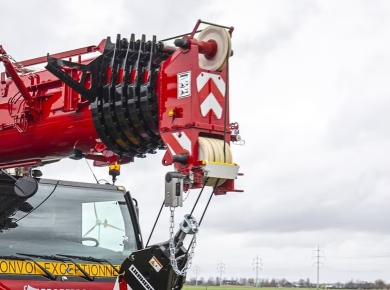The day the inspector arrived at our job site, the atmosphere shifted. The usual buzz of hammers and drills quieted, replaced by an undercurrent of tension. I watched as my crew exchanged wary glances, each of us acutely aware that a Technical Safety BC inspection could mean the difference between a smoothly running project and significant delays or penalties. It wasn’t just about compliance; it was about the safety of our team and the integrity of our work. Drawing from both my experiences and the lessons learned over the years, I want to share what these inspections really entail and how to prepare for them effectively.
Understanding the Purpose of Technical Safety BC Inspections
Technical Safety BC inspections are designed to ensure that construction sites adhere to the highest standards of safety and compliance. These inspections serve not only to protect workers but also to uphold the reputation of our industry. Each inspection is a chance to identify potential hazards before they become incidents.
In my experience, it’s vital to view these inspections not as a threat but as an opportunity for improvement. They provide an external perspective on our practices, often highlighting areas we might overlook in our daily routines. For instance, during one inspection, an inspector pointed out that our scaffolding setup could be improved for better stability. This feedback led us to reevaluate our processes, resulting in enhanced safety measures that benefited everyone on site.
Key Areas Inspectors Focus On
Understanding what inspectors look for can significantly ease the inspection process. While every site is unique, there are common focal points during these assessments.
Documentation and Compliance
Inspectors will scrutinize your safety documentation. This includes everything from safety plans and training records to incident reports. Make sure all documentation is current and readily accessible. I once witnessed a colleague scramble to gather paperwork, which only heightened the inspector’s scrutiny. Having everything organized not only saves time but also demonstrates professionalism.
Workplace Conditions
Inspectors assess the physical conditions of the job site. This encompasses everything from proper signage to clear walkways. A cluttered site can be a red flag, suggesting a lack of organization and care. During my career, I’ve learned that a clean site not only impresses inspectors but also contributes to overall safety. Encourage your team to maintain order and prioritize tidiness.
Equipment Safety
The state of your equipment is another critical focus area. Inspectors will check for proper maintenance records and safety features. I’ve seen projects derailed by equipment failures that could have been prevented with routine checks. Implementing a rigorous maintenance schedule not only keeps your equipment in top shape but also instills confidence in your team.
Preparing Your Team for Inspections
A successful inspection requires more than just compliant paperwork and equipment; it hinges on the preparation of your entire crew.
Training and Communication
Ensure that your team is well-trained and understands the safety protocols in place. Regular safety meetings are essential, not just for compliance but for fostering a culture of safety. When the inspector arrives, your team should be able to articulate their roles and responsibilities confidently. I’ve found that when workers know their procedures inside and out, they feel empowered and are less anxious about inspections.
Conduct Mock Inspections
Before the official inspection, consider conducting mock inspections. This practice can uncover gaps in compliance and give your team a taste of what to expect. After one mock inspection, we discovered several minor issues that we could easily rectify before the real thing. Not only does this preparation boost our chances of passing, but it also enhances overall safety awareness.
What Happens During the Inspection?
When the inspector arrives, they will typically conduct a walkthrough of the site, observe operations, and ask questions. The process can feel intimidating, but understanding what to expect can alleviate some of that stress.
Engagement with the Inspector
Being approachable and engaged during an inspection can make a significant difference. Greet the inspector and offer to guide them through the site. This openness can foster a collaborative atmosphere, allowing for constructive feedback rather than a combative one. I recall an inspection where the inspector appreciated our proactive approach, which led to a more relaxed and productive inspection process.
Addressing Concerns On-the-Spot
If the inspector raises a concern, address it promptly. Ignoring issues can lead to bigger problems later. On one occasion, an inspector noted that our fall protection system needed improvement. We immediately took steps to rectify it, and in turn, the inspector acknowledged our responsiveness, which positively influenced their final report.
Post-Inspection Steps
After the inspection concludes, the real work begins. It’s crucial to review the inspector’s findings and implement any necessary changes quickly.
Continuous Improvement
Use the inspection as a learning tool. Gather your team to discuss the feedback provided and brainstorm ways to improve. This collaborative approach not only strengthens safety practices but also fosters a culture of continuous improvement. After one inspection, we revamped our training sessions based on the feedback received, which led to a noticeable decrease in near-miss incidents.
Document Changes Made
Ensure that any changes made in response to the inspection are documented thoroughly. This not only shows compliance but also prepares you for future inspections. Keeping a log of changes and improvements made post-inspection can demonstrate your commitment to safety and compliance.
Conclusion: Embracing Inspections as a Safety Culture Catalyst
Technical Safety BC inspections can be a source of anxiety, but they also present an invaluable opportunity for growth and improvement. Embracing inspections as a vital part of your safety culture can lead to enhanced practices, greater team engagement, and, ultimately, a safer work environment. By preparing effectively, fostering open communication, and committing to continuous improvement, we can turn these inspections into a positive force for our projects and our teams. As we navigate the complexities of the construction landscape, let’s remember that prioritizing safety not only keeps our teams safe but also elevates the industry as a whole.


